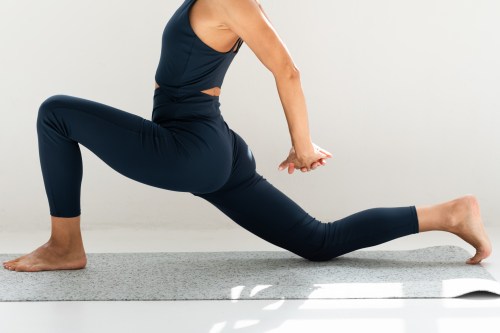Sometimes after a great yoga class, you stand up from the mat and just feel…incredible. Your muscles are loose, your mind is clear, and you swear you can feel your blood flowing through your veins bringing your body all those good nutrients it craves.
Experts in This Article
Could yoga actually be as good for you as it feels? Quite possibly, yes.
If you want to live a longer, healthier life, you might consider how you can include yoga as part of your regular routine. Science shows that committing to a consistent yoga practice can improve flexibility, increase muscle strength, prevent injuries, boost your immune system, help you sleep, and reduce stress. It can also support good cardiovascular health and reduce your risk of developing cardiometabolic conditions like high blood pressure: Recently, a study published in the Canadian Journal of Cardiology found that adding just 15 minutes of yoga to your workout routine could improve your blood pressure and resting heart rate—and reduce your cardiovascular risk.
How yoga boosts heart health
During the three-month-long study, researchers sought to determine whether the addition of yoga to a regular exercise routine could reduce the risk of developing heart disease, the leading cause of death globally. The research team recruited 60 people who’d previously been diagnosed with high blood pressure and metabolic syndrome (elevated risk of heart disease, diabetes, and stroke) to partake in an exercise training program.
Participants were split into two groups: one that did 15 minutes of yoga before a 30-minute cardio session five days a week and another that did 15 minutes of stretching before the same cardio session. The researchers then measured the participants’ blood pressure, glucose, and lipid levels. After three months, both groups saw positive changes. But the participants who did 15 minutes of yoga had significantly reduced their systolic blood pressure (more than twice as much as the stretchers), and showed lower resting heart rates and a decreased 10-year cardiovascular risk—which weren’t seen in the stretching-only group.
The reasons yoga outperforms stretching
Why would there be a difference? One possibility is yoga’s focus on controlled breathing. “Slow, deep breathing helps you tap into your parasympathetic nervous system, which controls things like heart rate and blood pressure,” says Nicola Banger, PT, OCS, a physical therapist with the Hospital for Special Surgery in New York who often works with yogis. “By consciously controlling your breath during yoga, you can lower your blood pressure, resting heart rate, and stress hormones.”
Others theorize that yoga trumps stretching because it engages both your body and mind. “Yoga involves physical activity, breathing, and meditation—all of which are beneficial to a person’s physical, emotional, and spiritual well-being,” explains Nina Moore, CPT, a certified personal trainer with FORME. “Practicing yoga prior to aerobic activity may encourage more mental presence and physical connection to the body while downregulating several systems within the body.”
Additionally, engaging in a mindfulness practice like yoga tends to encourage other healthy behaviors that support good cardiovascular health, like eating healthful food, getting solid sleep, and managing stress.
And if yoga’s not your thing…
Of course, not all workouts are everyone’s cup of tea. If you’ve tried yoga and it just isn’t for you, Banger suggests doing multi-joint, full-range strength training exercises. “You can still get the flexibility benefits from stretching combined with eccentric (lengthening) muscular contractions. In addition, by practicing mindfulness and deep breathing, you can get similar stress relief as a yoga practice,” she says. “Ultimately, you’ll benefit the most from whichever practice you’re most likely to stay consistent with and, better yet, enjoy.”
Sign Up for Our Daily Newsletter
Get all the latest in wellness, trends, food, fitness, beauty, and more delivered right to your inbox.
Got it, you've been added to our email list.











